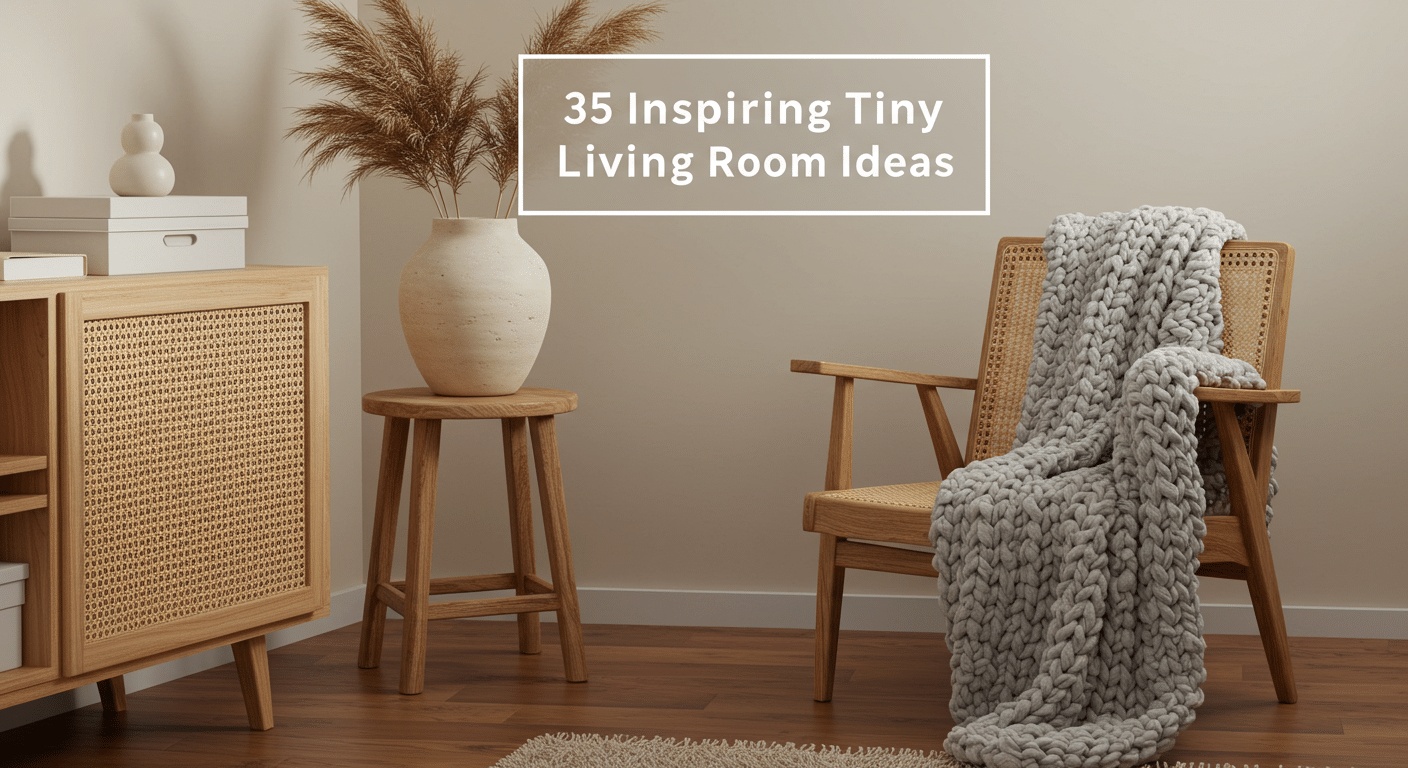Living in a small space doesn’t mean you have to settle for a lackluster home. It’s an opportunity to get creative and make your tiny living room feel spacious, functional, and stylish. If you’ve been feeling cramped, don’t worry! With a few design tweaks, your small space can be transformed into a cozy, inviting oasis.
Here are 35 inspiring tiny living room ideas to help you maximize every inch of your space.
1. Keep It Light and Bright
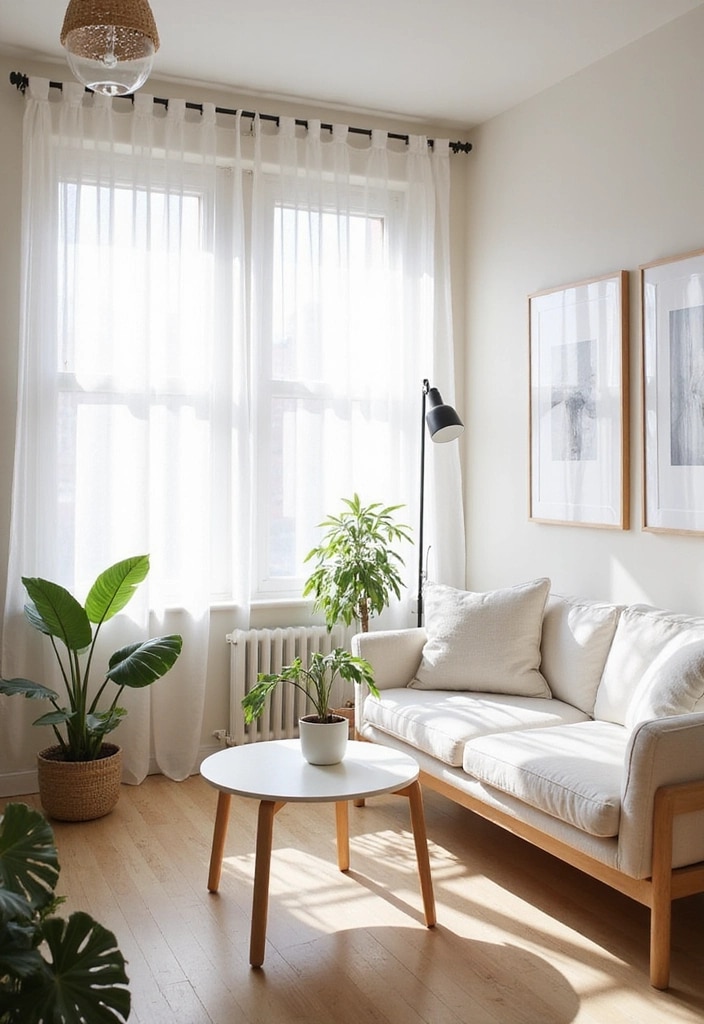
Choosing the right colors is key to making a small living room feel larger. Light tones like sof kit whites, light grays, and pastel hues will reflect light and open up your space. Light colors create the illusion of airiness, making even the smallest rooms feel more expansive.
Tip:
Don’t be afraid to use white for furniture and walls—it might seem bold, but it’ll make your room feel a lot more open.
2. Opt for Multi-Functional Furniture
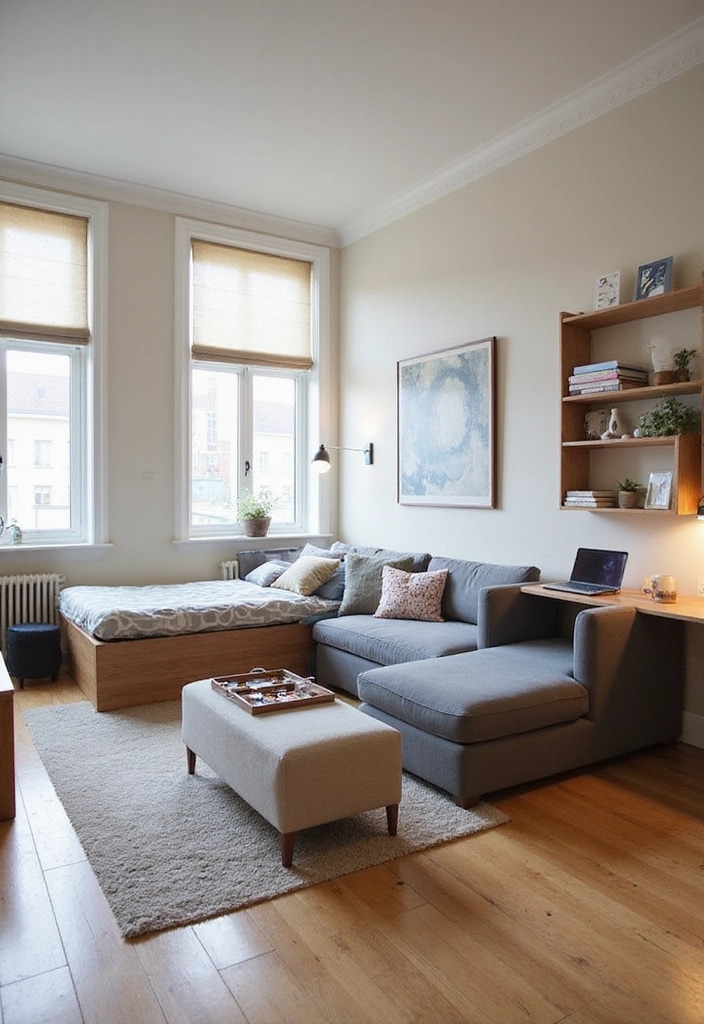
When space is limited, you need furniture that does more than just one job. A sofa that transforms into a bed, or a coffee table that doubles as a storage unit, will make your life easier. Multi-functional furniture not only saves space but also adds versatility to your living room.
Example:
An ottoman can serve as both a footrest and hidden storage for blankets or books.
3. Look Up—Use Vertical Storage
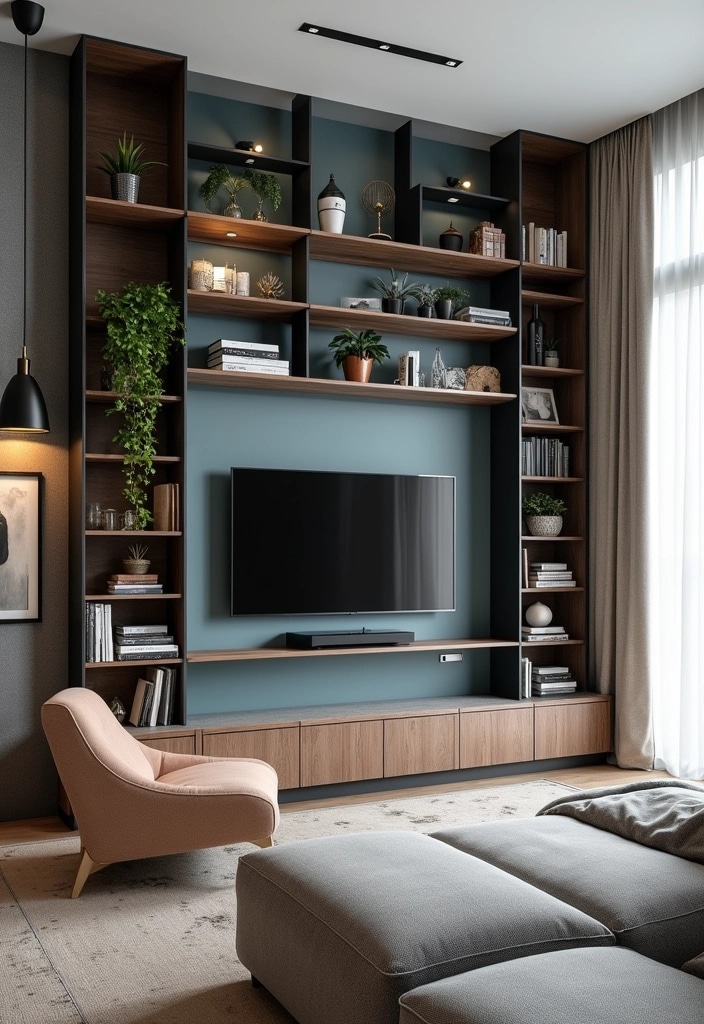
One of the best ways to save space in a tiny living room is by utilizing vertical storage. You don’t need to only rely on floor space; look up! Wall-mounted shelves, tall bookshelves, and floating cabinets can free up room on the floor and make your space feel bigger.
Pro Tip:
Install shelves above the door or along the top of the walls to store items that are rarely used.
4. Incorporate Mirrors to Expand the Space
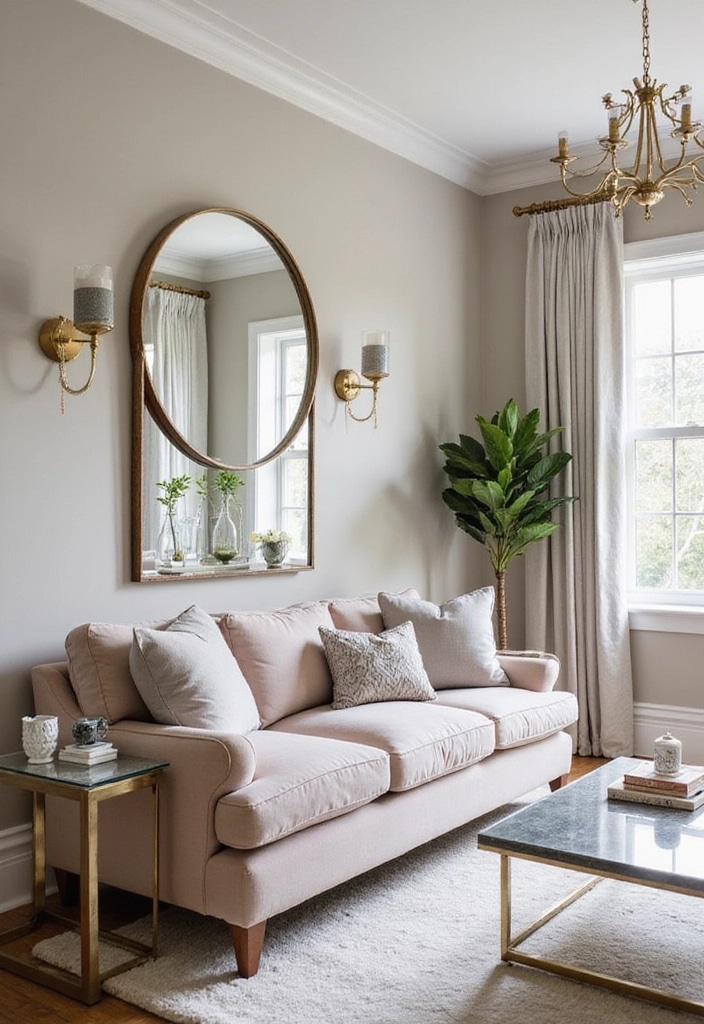
Mirrors are a tiny living room’s best friend. They reflect light, add depth, and create the illusion of more space. Consider placing a large mirror on one wall—it’ll instantly make your small room feel bigger and brighter.
Quick Tip:
Place mirrors opposite windows to bounce natural light around and maximize the effect.
5. Choose Low-Profile Furniture
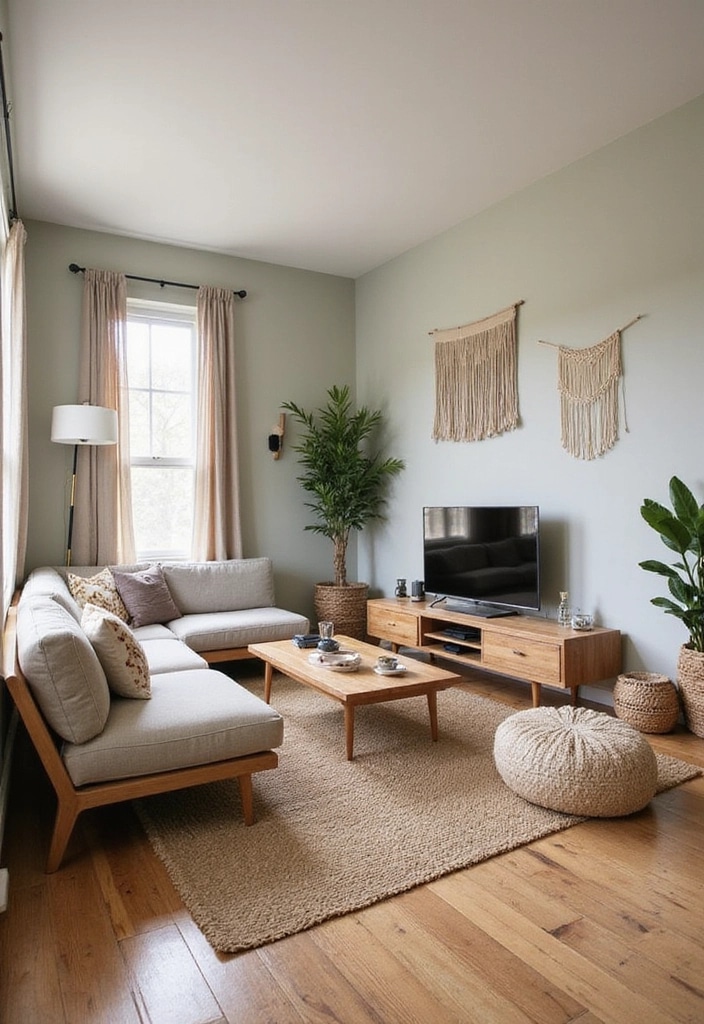
Heavy, bulky furniture can make a small space feel cramped and cluttered. Instead, opt for low-profile furniture. Think low-slung couches, simple chairs, and slim tables. These will help keep your room feeling open and airy.
Why it works:
Low furniture leaves more visible floor space, which visually expands your room’s size.
6. Add Interest with Multi-Level Designs
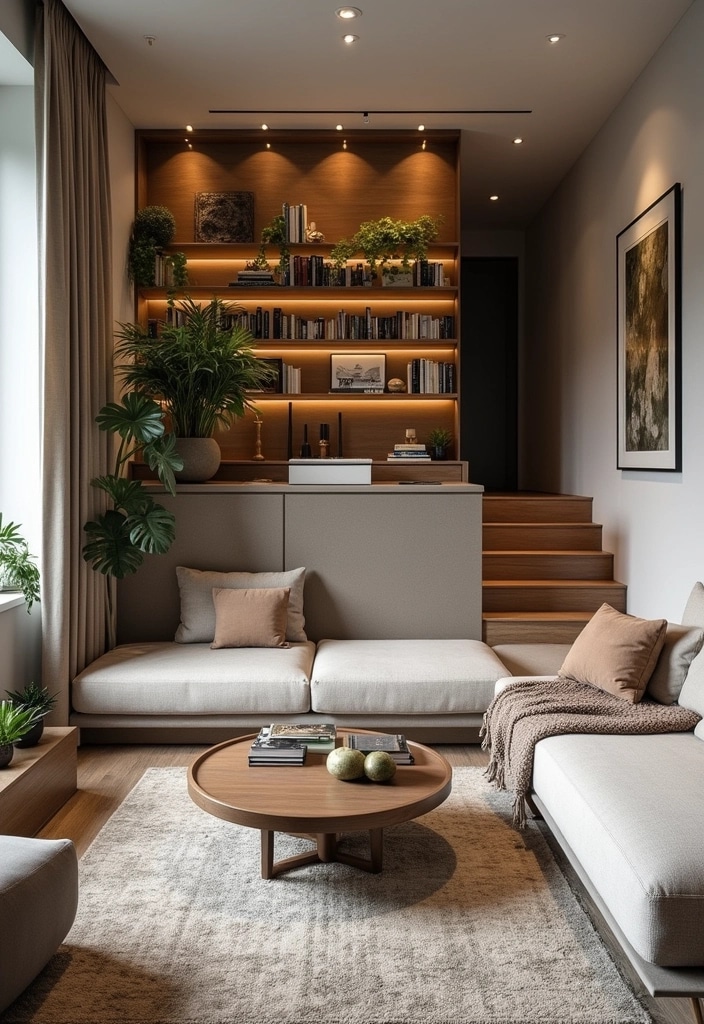
Using furniture or décor at different heights can create a more dynamic space. Mix up the levels of shelves, lighting, and even plants to add visual interest. A room with varied heights feels more spacious and less flat.
Example:
Try stacking books or placing plants on tall shelves to keep the room from feeling one-dimensional.
7. Stick to a Neutral Base with Pops of Color
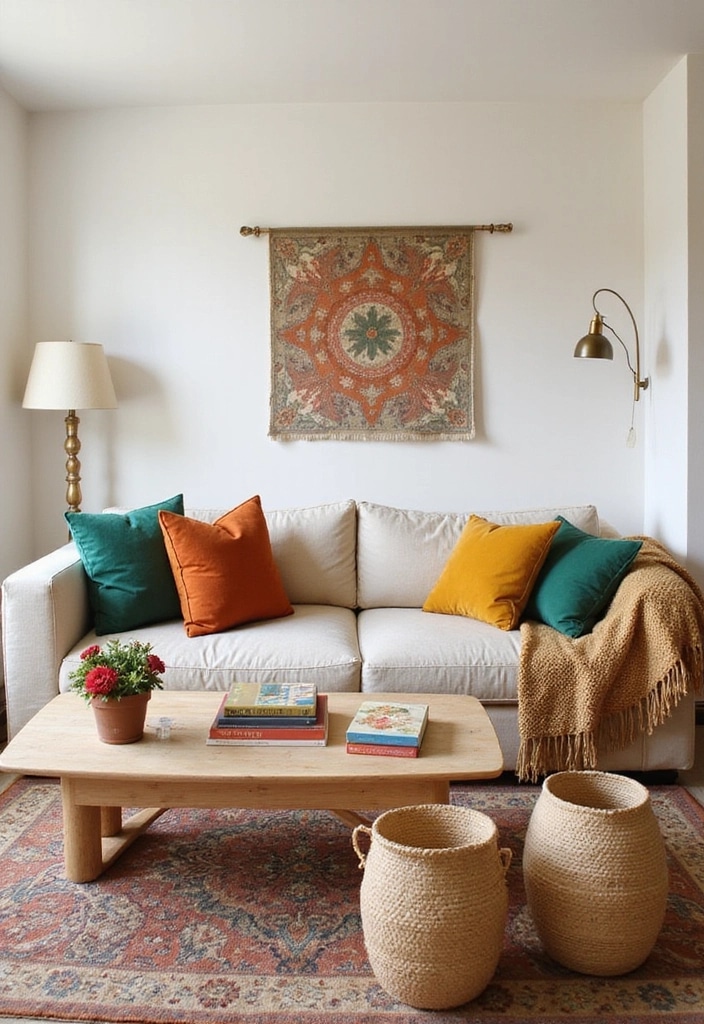
Neutrals on walls and furniture give your room a clean, uncluttered base, while vibrant accents can inject personality and warmth. Consider using bold colors in accessories like pillows, rugs, or art. Just keep the color palette balanced so the room doesn’t feel too chaotic.
Color Tip:
Think about using a neutral sofa, but add a pop of color with a statement rug or bright throw blanket.
8. Embrace Minimalism
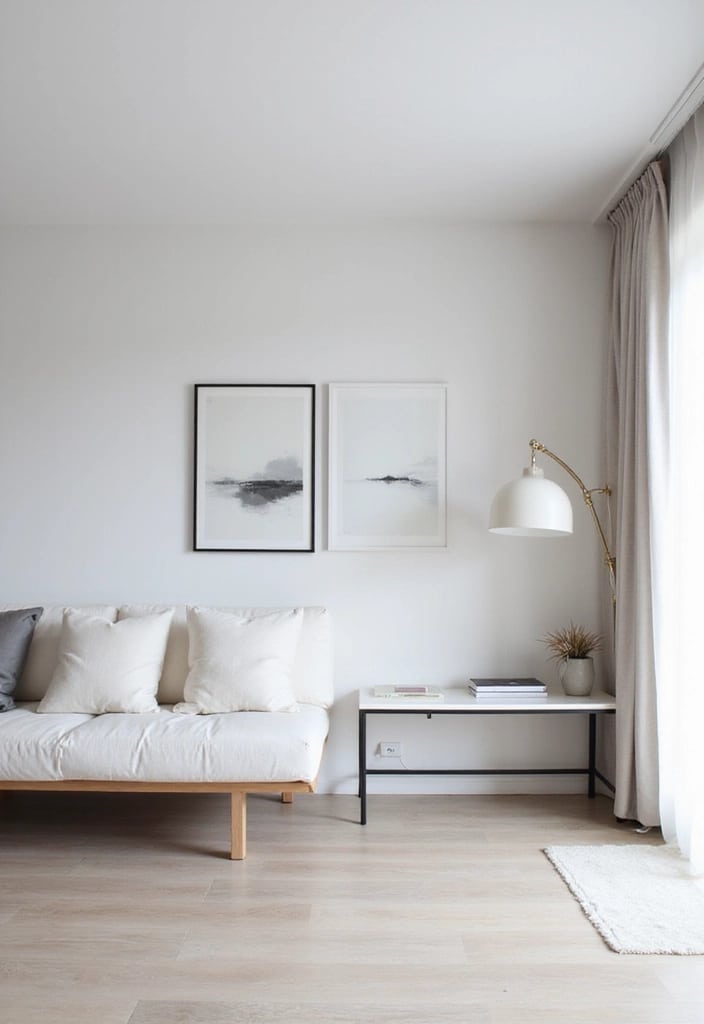
A cluttered room will only make your living space feel more cramped. Minimalism is your friend in a tiny room. Keep only the essentials—things you love or use regularly. Remove unnecessary decor to allow your furniture and space to breathe.
Tip:
The fewer items in your room, the more it will feel like a peaceful retreat instead of a cluttered mess.
9. Make Furniture Float

Floating furniture, like a sofa or TV stand not directly against the wall, can open up the room. This simple trick makes the space feel bigger and adds flow to your layout. It’s perfect for creating visual depth and moving away from traditional, wall-hugging arrangements.
Pro Tip:
Try floating your couch in the middle of the room with an area rug beneath it to define the space.
10. Scale Down Your Furniture
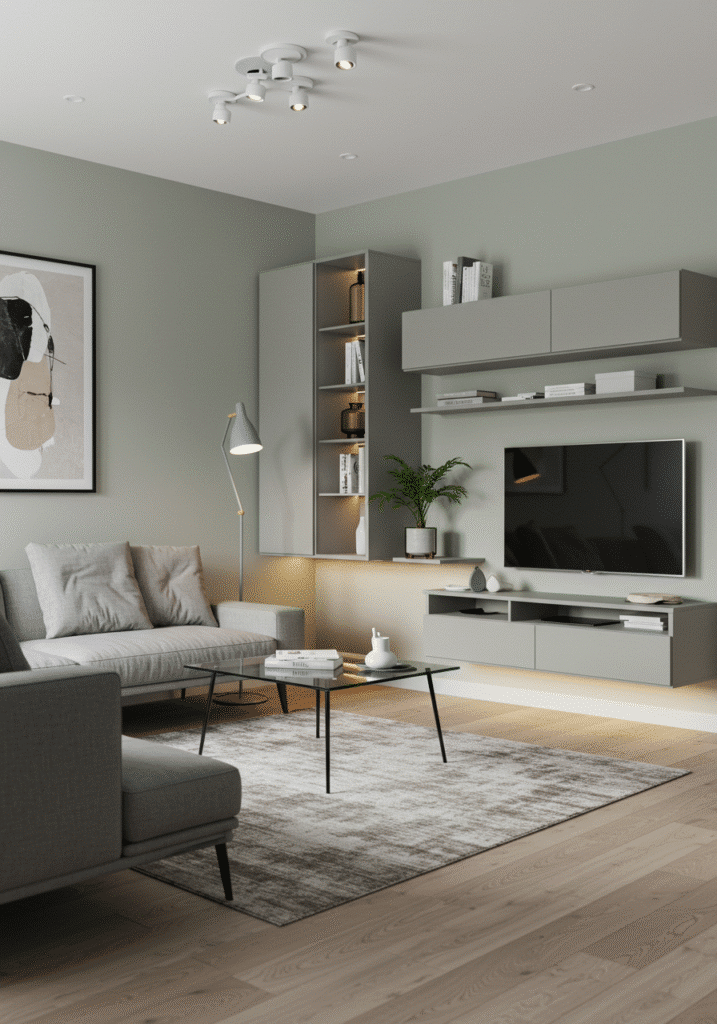
Not every living room needs a giant sectional or bulky pieces. In fact, opting for smaller, more delicate furniture can make a tiny living room feel much more spacious. Look for compact sofas, chairs with slim legs, and petite tables.
Why it works:
Smaller furniture keeps the space from feeling overcrowded, allowing you more room to move around.
11. Add Vertical Lines to the Decor

When it comes to patterns, vertical lines are your friend. Whether it’s through wallpaper, striped rugs, or curtains, vertical lines can create the illusion of height. This is especially helpful in rooms with low ceilings.
Pro Tip:
Long curtains that hang from ceiling to floor can make your room look taller and more open.
12. Use Floating Shelves

Floating shelves are perfect for small spaces. They give you storage without taking up valuable floor space. Whether you’re storing books, plants, or decorative pieces, floating shelves keep your room tidy and open.
Pro Tip:
Install floating shelves above the TV or along an empty wall to store decor and essentials without cluttering the room.
13. Keep the Layout Open and Fluid
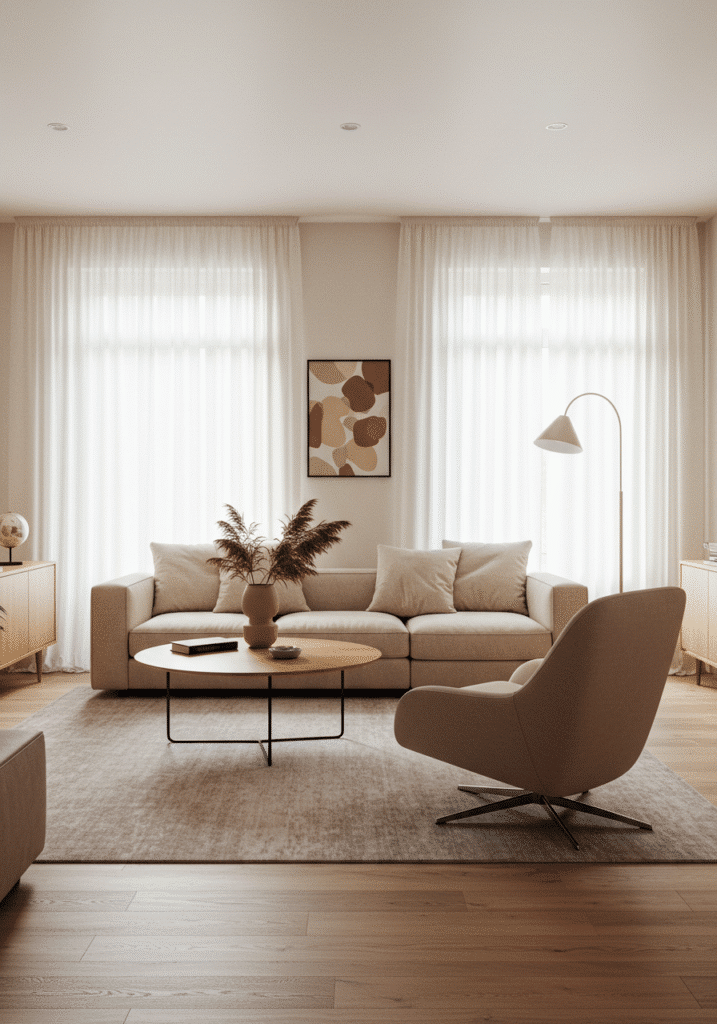
In a small living room, avoid blocking pathways or creating cramped corners. Keep the layout as open as possible by arranging your furniture to allow for easy movement. This will not only improve the room’s flow but also make the space feel less confined.
Tip:
Avoid placing furniture directly in front of doorways or windows—keep the flow unobstructed.
14. Go For a Foldable Furniture Option
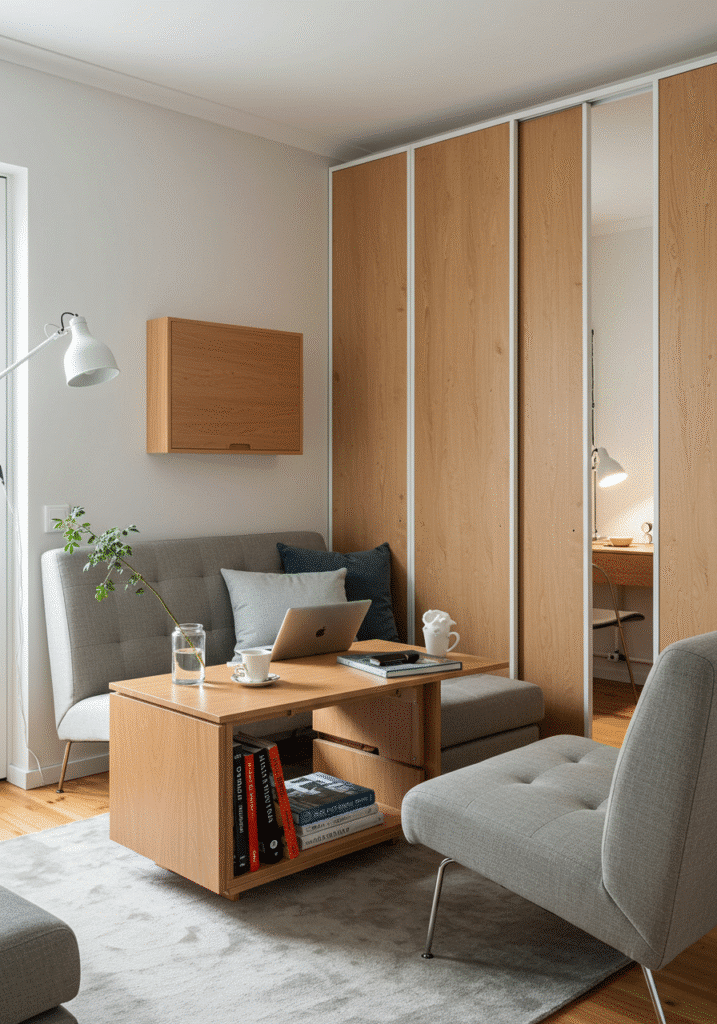
Foldable furniture is incredibly versatile in small spaces. A foldable table, chairs, or even a bed can help you save space when not in use. This is perfect for small living rooms that double as a workspace or guest room.
Tip:
A folding desk or wall-mounted table can transform your living room into a temporary office without cluttering the space.
15. Use Light, Sheer Curtains
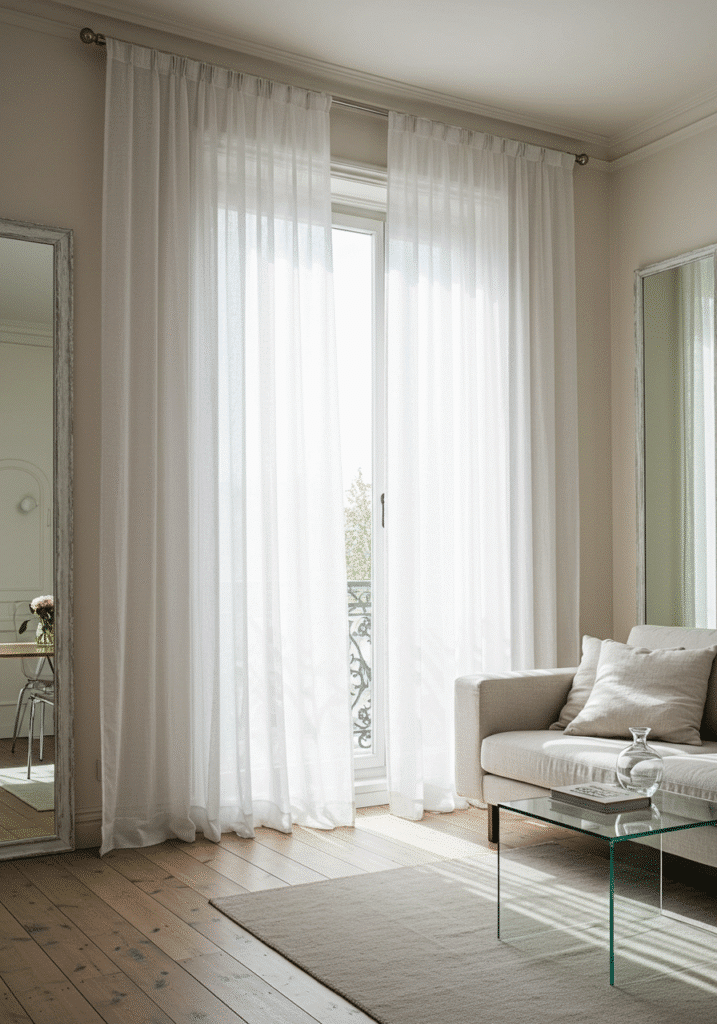
Heavy, dark curtains can make a room feel stuffy and smaller than it actually is. Light, sheer curtains allow natural light to flow freely into your space. This helps keep the room bright, airy, and open.
Pro Tip:
Hang curtains higher than the window frame to create the illusion of taller windows and a bigger room.
16. Use a Gallery Wall to Draw the Eye Up
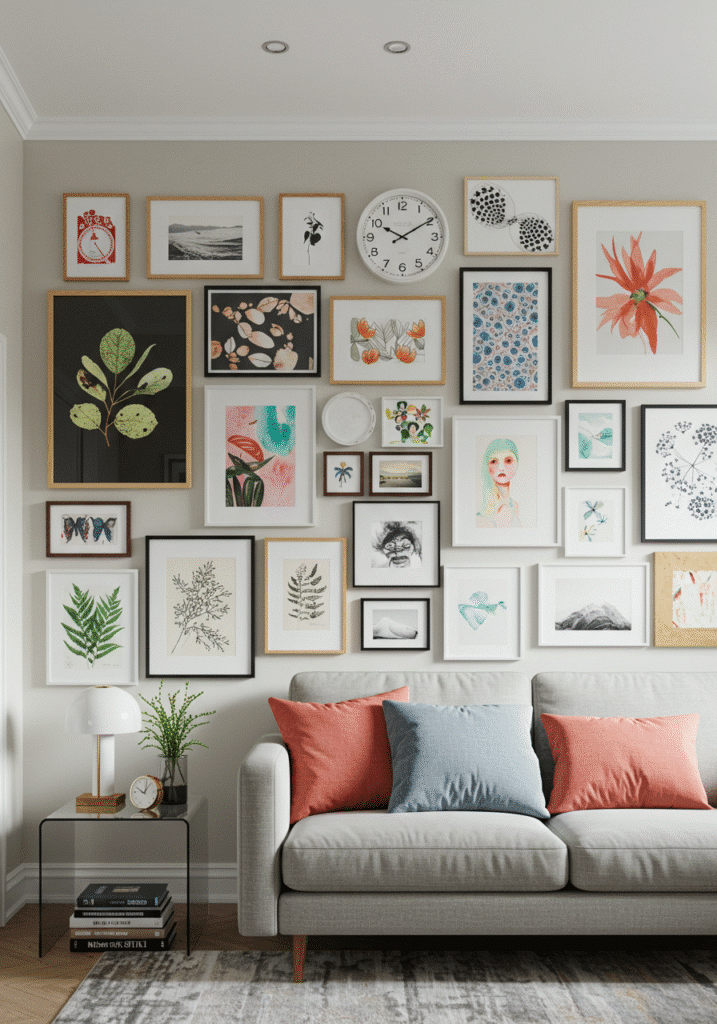
Instead of one oversized piece of art, use a collection of smaller framed prints or photos and arrange them vertically. It pulls the eye up and makes the walls feel taller. A good gallery wall makes the space feel curated, not crowded.
Tip:
Keep your frames slim and the color palette tight for a cohesive, airy look.
17. Choose Transparent Furniture
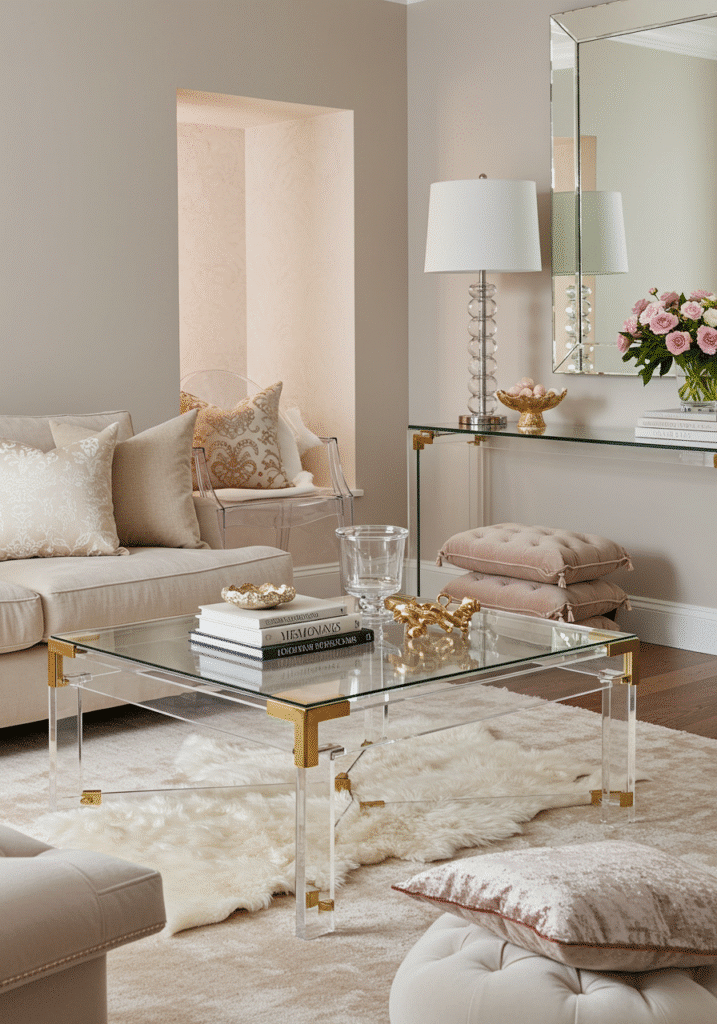
Glass or acrylic furniture basically disappears. A clear coffee table or chair won’t block sightlines, which helps a room feel more open. Your eyes won’t hit a visual wall, so everything just flows nicer.
Bonus:
They’re surprisingly durable and modern—total win.
18. Hang Plants from the Ceiling
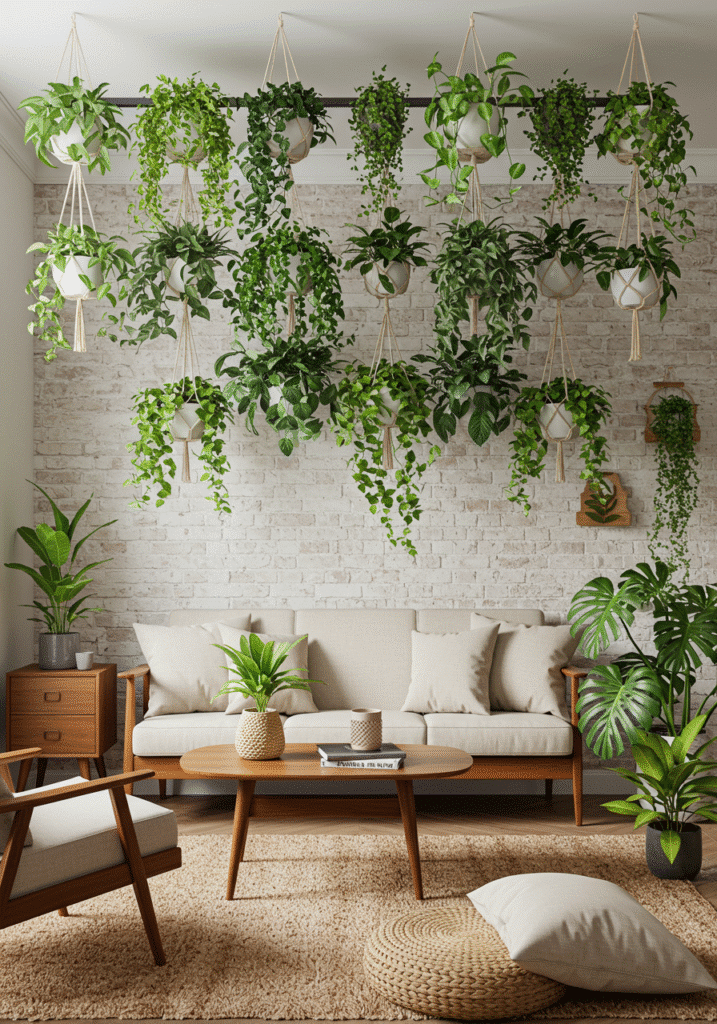
No space for plant stands or shelves? Hang your greenery from the ceiling. Macrame hangers, tiny pots on hooks, or even DIY shelves suspended by rope can add freshness without taking up floor or table space.
Why It Works:
Plants draw attention upward and soften harsh corners.
19. Tuck Lighting Into Corners

Bulky lamps eat up precious surface space. Instead, go for wall-mounted sconces, corner floor lamps, or string lights. It frees up tabletops and gives the room a cozy, glowy vibe.
Tip:
Plug-in sconces are renter-friendly and perfect for small wall spaces.
20. Create a Defined Zone with Rugs

Using a rug to define your seating area gives structure to a tiny space. Even in a small room, a rug helps create visual boundaries and makes everything feel anchored.
Pro Tip:
Don’t go too small—ironically, larger rugs make small rooms feel bigger.
21. Install a Drop-Down Desk or Bar
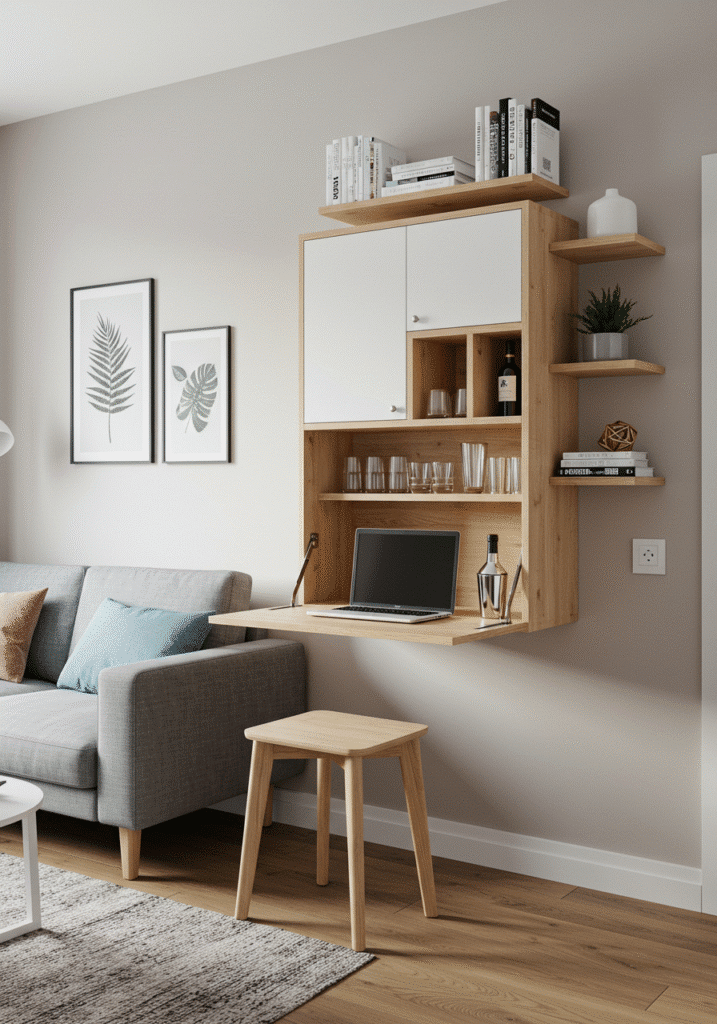
A fold-out wall-mounted desk or mini bar can give you function without the bulk. Pop it out when you need it, then fold it back like it was never there. Hello, extra space.
Tip:
Great for remote workers or impromptu cocktail hour.
22. Paint the Ceiling a Soft Color
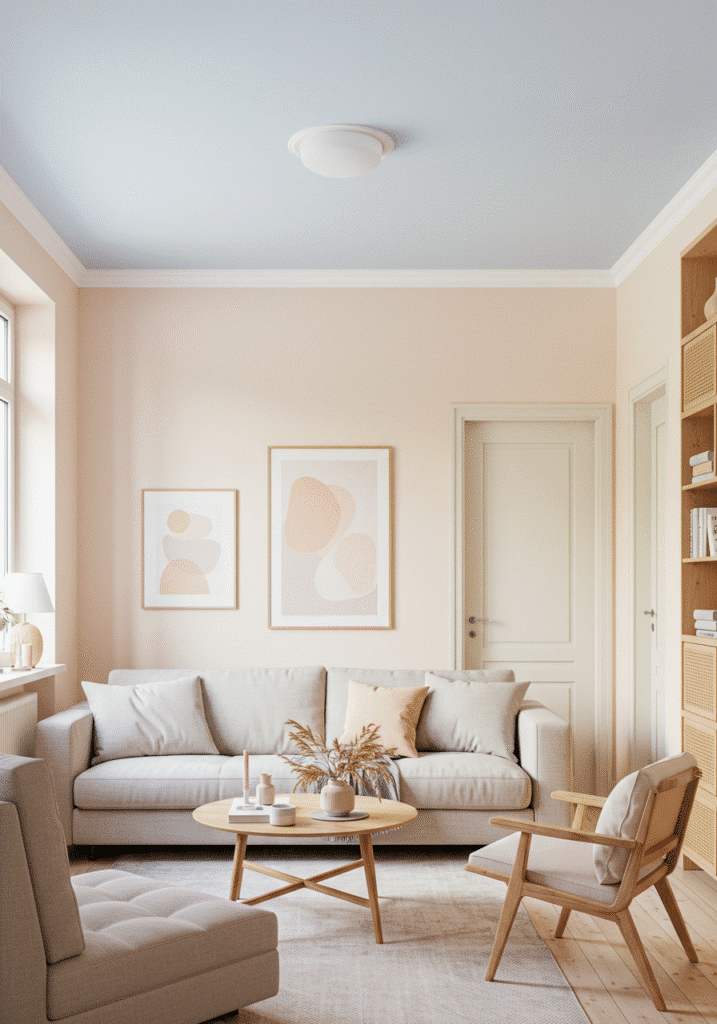
Most people forget the ceiling! Painting it a soft color like blush, sky blue, or warm ivory gives your space a lift—literally. It draws the eye upward and makes the room feel taller and a bit more whimsical.
Don’t:
Go too dark unless you’ve got loads of natural light.
23. Choose Armless Seating
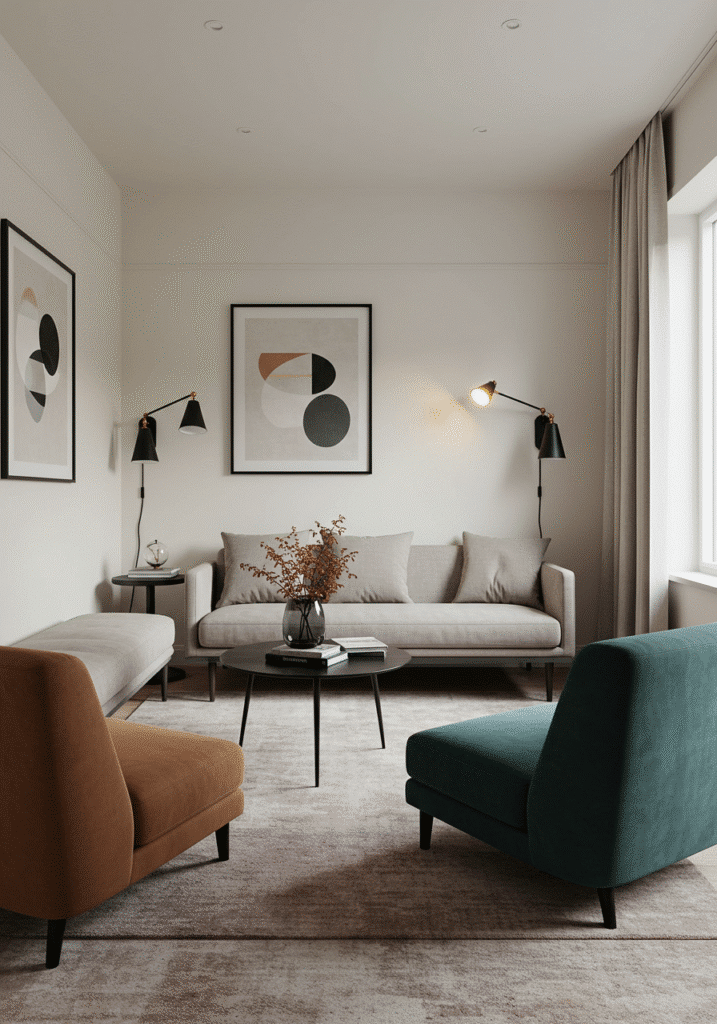
Armless sofas, loveseats, or chairs take up less space visually and physically. They also give you more flexibility in a compact layout.
Tip:
A sleek armless chair by the window can double as a reading nook or extra guest seat.
24. Use a Bench as a Coffee Table
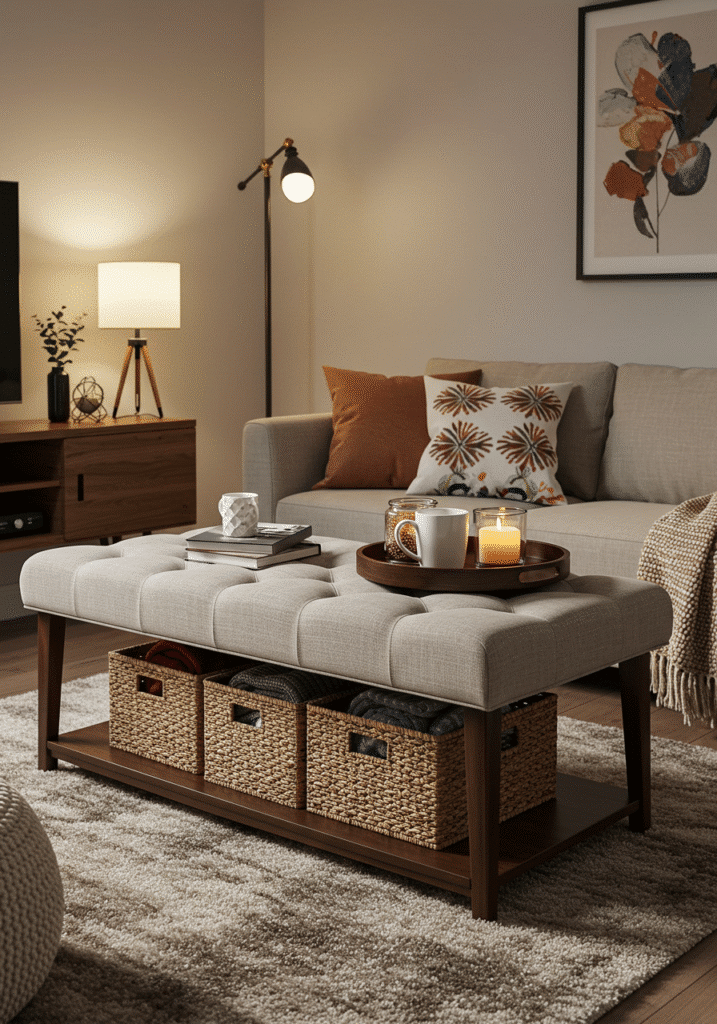
Benches are narrow, long, and double as seating. Add a tray and boom—it’s a coffee table. Need more seats when guests come over? Just slide the tray off and pull it around.
Why It’s Smart:
It’s multipurpose without looking like it’s trying too hard.
25. Hide Things Under the Sofa

There’s gold under there—well, storage potential. Use low bins, baskets, or even flat drawers under your couch for things like off-season throws, games, or remotes you don’t wanna see.
Trick:
Add a fabric skirt to the base if you want to keep it all hidden chic.
26. Use Sliding Doors or Curtains Instead of Swing Doors

If your tiny living room connects to another space, a swinging door eats room fast. Try sliding barn doors or curtains instead. You’ll save space and get bonus style points.
Bonus:
Curtains can add softness and make the room feel taller.
27. Layer Lighting, Don’t Just Use Overhead
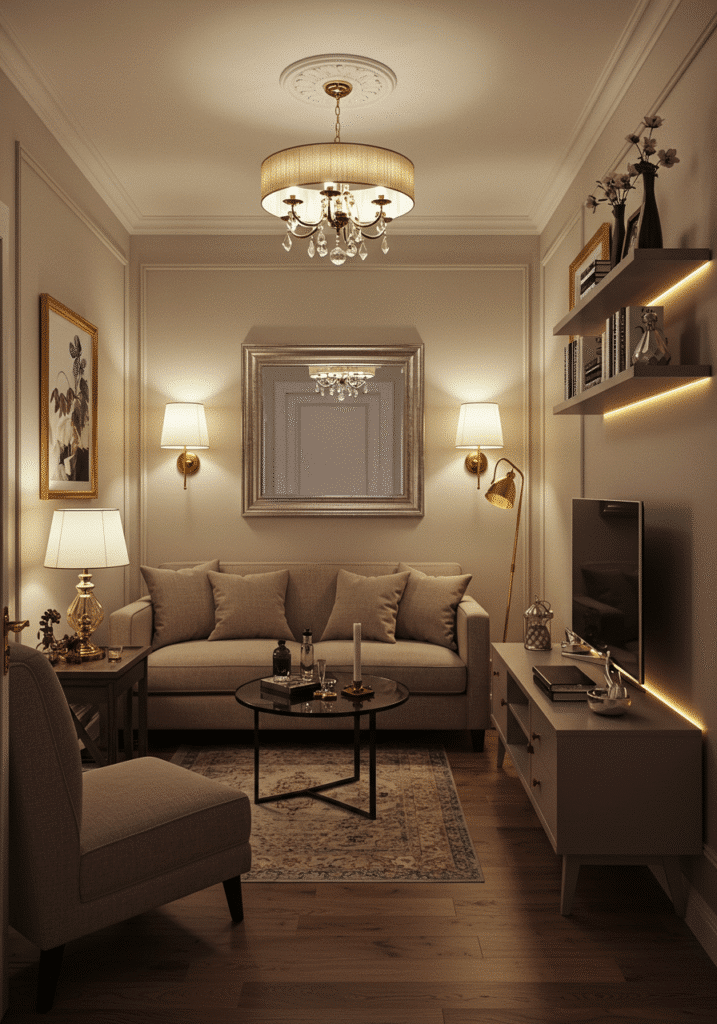
Overhead lights can be harsh and flatten a small space. Layer in floor lamps, string lights, and candles to create depth and dimension. It makes everything feel cozy, not clinical.
Try:
Warm-toned bulbs for a softer, more inviting look.
28. Embrace Asymmetry in Layouts
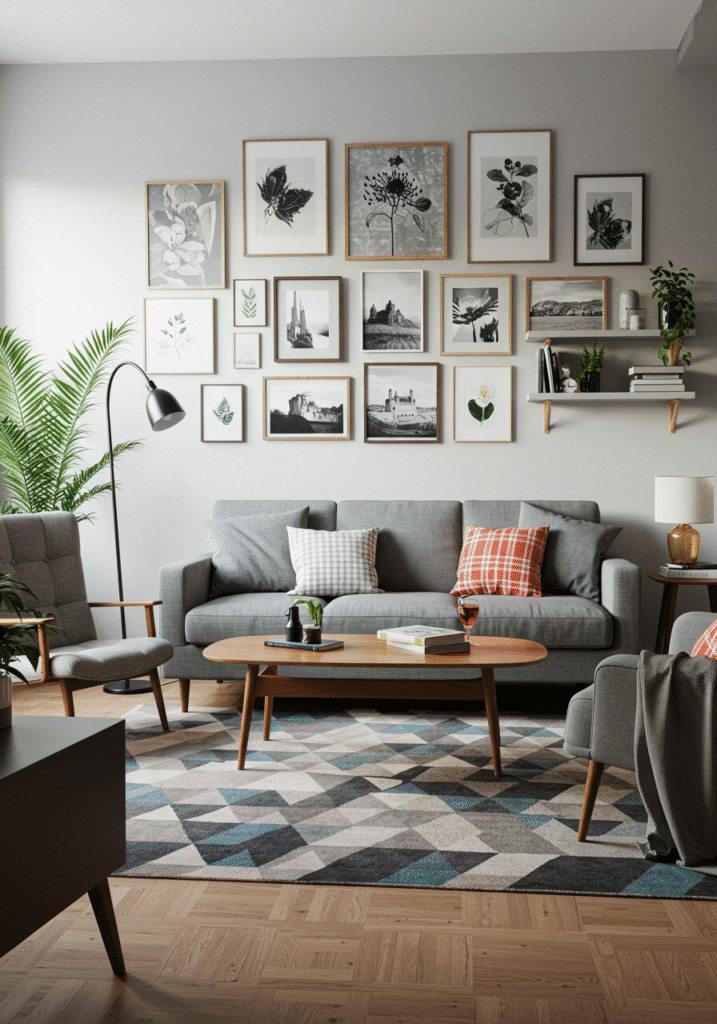
Forget traditional symmetrical layouts. Play with off-center sofas, angled chairs, or staggered shelves. Asymmetry adds movement and keeps your small room from feeling boxed in.
Fun Tip:
It’s also more forgiving if you don’t have matching furniture.
29. Use a Daybed Instead of a Sofa

Daybeds are super versatile. They work as a couch, a nap zone, or even guest sleeping. They usually have a smaller footprint too, which is perfect for tight spaces.
Add:
A bunch of cushions to make it cozy and couch-like.
30. Install a Pegboard Wall
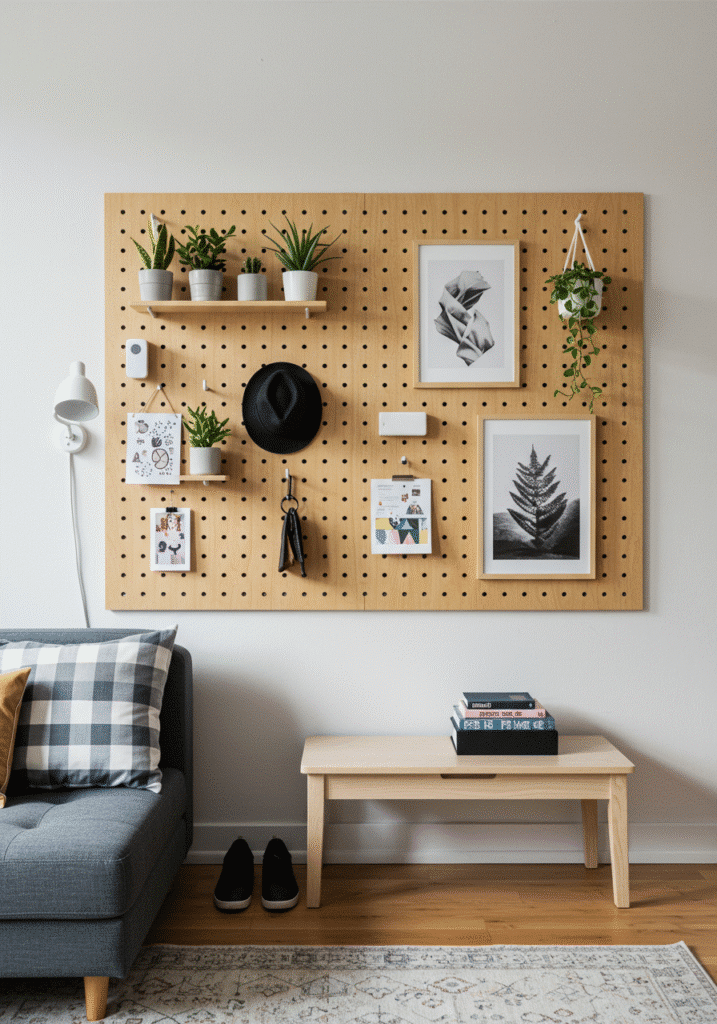
Not just for garages anymore! Pegboards can hold plants, photos, tiny shelves, even lighting fixtures. Totally customizable and space-saving.
Secret Sauce:
Paint it the same color as the wall to keep it subtle.
31. Swap Out Bulky Coffee Tables for Nesting Tables

Nesting tables tuck right into each other when you’re not using them. Pull them out only when you need more surface area. They’re flexible, cute, and smart.
Try:
Mixed materials like wood and metal for an eclectic feel.
32. Style the Corners (Don’t Ignore Them)
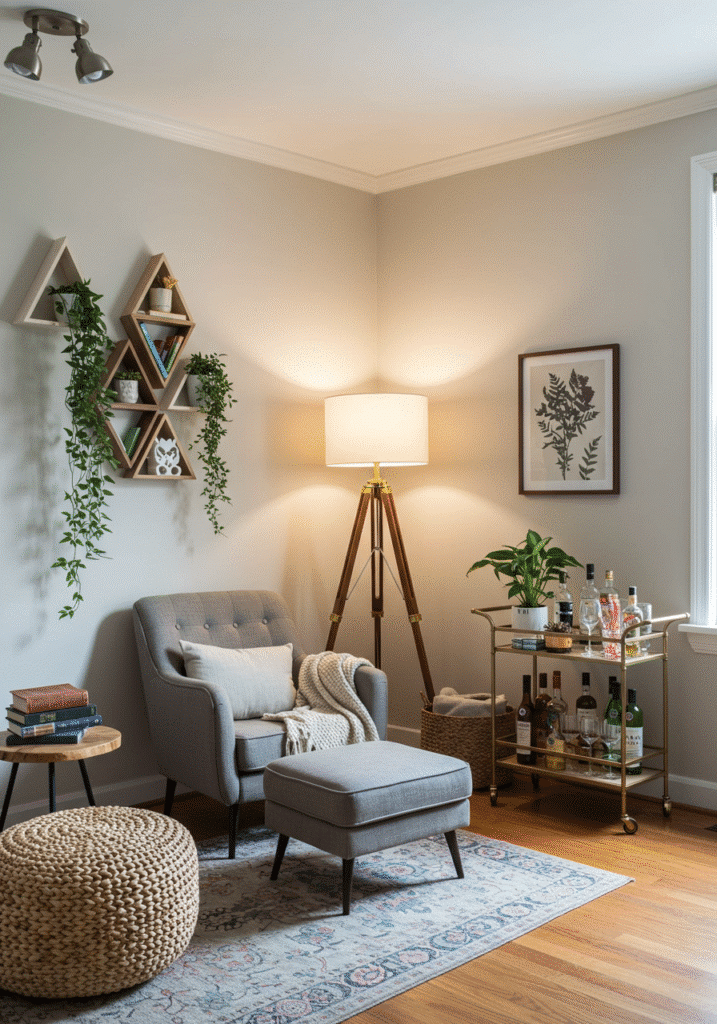
Corners often get ignored, but they’re gold. Add a tall plant, a slim bookshelf, or a corner gallery wall to make use of every nook. This adds function and texture without feeling forced.
Tip:
Even a hanging chair can go in a corner if your ceiling’s strong enough.
33. Use Wallpaper on One Small Wall

A bold wallpaper can create a focal point and trick the eye into thinking the space is bigger. Just one wall, though—you don’t wanna overdo it.
Pattern Tip:
Go for soft geometrics or nature-inspired designs for a cozy but fresh vibe.
34. Display Books Horizontally and Vertically
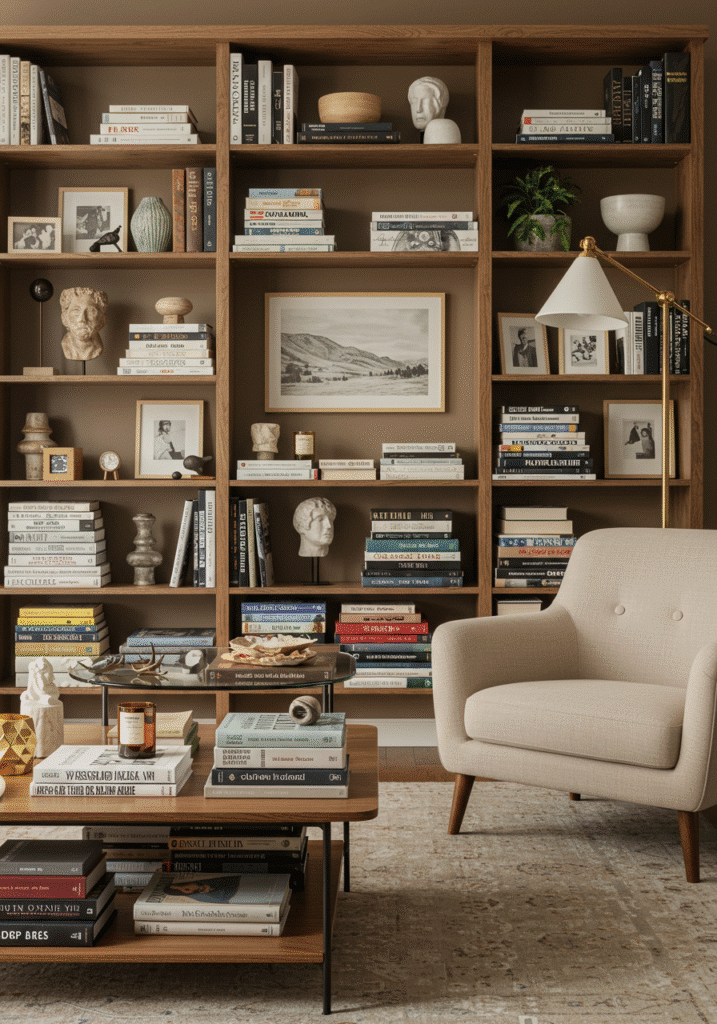
Break the visual monotony by stacking books both ways on shelves. Add in a few small trinkets or photos to create balance. It adds personality without clutter.
Quirk:
Put a weird object on top of your book stack. Like, a tiny cactus. Or a duck. Don’t ask why—it just works.
35. Paint the Walls and Trim the Same Color

Hear us out. When you paint the trim and walls the same color, it creates a seamless look that makes your space feel bigger. There’s no visual break, so your eyes keep going.
Best Shades:
Try soft neutrals or even a dusty pastel for warmth and calm.

Dorothy is a design lover on a mission to make every space feel inspired — from cozy living rooms to stylish home offices. With a flair for blending comfort, creativity, and practical ideas, she shares decor tips that breathe life into homes, workspaces, and everything in between. Whether you’re revamping a bedroom or refreshing your office nook, Dorothy’s thoughtful ideas help you design spaces that reflect your unique style.
